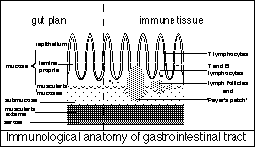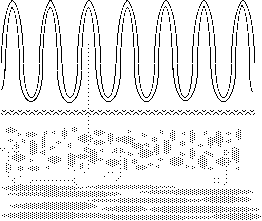![]() the place of gut physiology
the place of gut physiology
![]() biochemistry of digestion
biochemistry of digestion
|
|
www.nlm.nih.gov/research/visible/visible_gallery.html |
![]() the clinical approach
the clinical approach
![]() craft knowledge
craft knowledge
![]() diagnosis
diagnosis
![]() nosology of disease entities--pathology
nosology of disease entities--pathology
![]()
![]()
physiological anatomy
![]() lumen
lumen
![]() sphincter (examples)
sphincter (examples)
![]() the gut wall
the gut wall
![]() layers
layers
 |
|
|

template for neurophysiological pathways for peristalsis |
References and Advanced Reading. Relationship between Endocrine and Neural Physiology. Berne & Levy 4th ed. p. 779. Saul Genuth's insightful little essay on the deep connection between nervous and endocrine function. Jumps about in scale a bit from the cellular to the systemic. Just over two sides long--about 3 minutes work: a perfect start for that quiet evening at home alone... In Talking with Patients many of James Christensen's points about history taking--the most important step in diagnosis--apply to medicine in general, not gastroenterology alone. Not a list of facts to learn, but an essay to consider (25 minutes' reading time) and bookmark. On-line resources located through http://www.medicalstudent.com. Links mentioned in this article were valid when last checked on 29th March 2005: please report broken links. |
Sample multiple-choice question for discussion. (a) is a selector of molecules from the environment (b) carries out two main processes--digestion, then absorption (c) is controlled by the central nervous system at its two ends (d) has a lumen which is outside the body (e) all of the above |